- Home
- Oliver Sacks
The Mind's Eye
The Mind's Eye Read online
ALSO BY OLIVER SACKS
Migraine
Awakenings
A Leg to Stand On
The Man Who Mistook His Wife for a Hat
Seeing Voices
An Anthropologist on Mars
The Island of the Colorblind
Uncle Tungsten
Oaxaca Journal
Musicophilia
THIS IS A BORZOI BOOK
PUBLISHED BY ALFRED A. KNOPF AND ALFRED A. KNOPF CANADA
Copyright © 2010 by Oliver Sacks
All rights reserved. Published in the United States by Alfred A. Knopf, a division of Random House, Inc., New York, and in Canada by Alfred A. Knopf Canada, a division of Random House of Canada Limited, Toronto.
www.aaknopf.com
www.randomhouse.ca
Knopf, Borzoi Books, and the colophon are registered trademarks of Random House, Inc.
Knopf Canada and colophon are registered trademarks.
Portions of this work originally appeared in different form in The New Yorker.
Permission to quote previously published material may be found following the index.
Library of Congress Cataloging-in-Publication Data
Sacks, Oliver W.
The mind’s eye / Oliver Sacks.
p. cm.
“This is a Borzoi book.”
1. Communicative disorders—Popular works. 2. Cognition disorders—Popular works. 3. Face perception—Popular works. 4. Perception—Popular works. I. Title.
RC423.S23 2010
616.85′5—dc22
2010012791
Library and Archives Canada Cataloguing in Publication
Sacks, Oliver W.
The mind’s eye / Oliver Sacks.
eISBN: 978-0-307-59455-6
1. Visual perception. 2. Blindness—Psychological aspects. I. Title.
BF241.S136 2010 152.14 C2010-901429-4
v3.1
for David Abramson
CONTENTS
Cover
Other Books by This Author
Title Page
Copyright
Dedication
Preface
Sight Reading
Recalled to Life
A Man of Letters
Face-Blind
Stereo Sue
Persistence of Vision: A Journal
The Mind’s Eye
Bibliography
Permissions Acknowledgments
A Note About the Author
PREFACE
I grew up in a household full of doctors and medical talk—my father and older brothers were general practitioners, and my mother was a surgeon. A lot of the dinner-table conversation was inevitably about medicine, but the talk was never just about “cases.” A patient might present as a case of this or that, but in my parents’ conversation, cases became biographies, stories of people’s lives as they responded to illness or injury, stress or misfortune. Perhaps it was inevitable that I myself became both a physician and a storyteller.
When The Man Who Mistook His Wife for a Hat was published in 1985, it was given a very pleasant review by an eminent academic neurologist. The cases, he wrote, were fascinating, but he had one reservation: he thought I was being disingenuous in presenting patients as if I had come to them with no preconceptions, with little background knowledge of their conditions. Did I really read up on the scientific literature only after seeing a patient with a particular condition? Surely, he thought, I had started with a neurological theme in mind and simply sought out patients who exemplified it.
But I am not an academic neurologist, and the truth is that most practicing physicians have, apart from their broad medical education, little in-depth knowledge of many conditions, especially those which are considered rare, and thus not worthy of much time in medical school. When a patient presents himself with such a condition, we must do some research and, especially, go back to original descriptions. Typically, then, my case histories start with an encounter, a letter, a knock on the door—it is the patients’ description of their experience that stimulates the more general exploration.
As a general neurologist working mostly in old-age homes, I have seen thousands of patients over the past decades. All of them have taught me something, and I enjoy seeing them—in some cases, we have been seeing each other regularly, as doctor and patient, for twenty years or more. In my clinical notes, I do my best to record what is happening with them and to reflect on their experiences. Occasionally, with the patient’s permission, my notes evolve into essays.
After I began publishing case histories, starting with Migraine in 1970, I began receiving letters from people seeking to understand or comment on their own neurological experiences, and such correspondence has become, in a way, an extension of my practice. Thus some of the people I describe in this book are patients; others are people who have written to me after reading one of my case histories. I am grateful to all of them for agreeing to share their experiences, for such experiences enlarge the imagination and show us what is often concealed in health: the complex workings of the brain and its astounding ability to adapt and overcome disability—to say nothing of the courage and strength that individuals can show, and the inner resources they can bring to bear, in the face of neurological challenges that are almost impossible for the rest of us to imagine.
Many of my colleagues, past and present, have generously shared their time and expertise to discuss the ideas in this book or to comment on its various drafts. To all of them (and the many whom I have omitted here) I am most grateful, especially to Paul Bach-y-Rita, Jerome Bruner, Liam Burke, John Cisne, Jennifer and John Clay, Bevil Conway, Antonio and Hanna Damasio, Orrin Devinsky, Dominic ffytche, Elkhonon Goldberg, Jane Goodall, Temple Grandin, Richard Gregory, Charles Gross, Bill Hayes, Simon Hayhoe, David Hubel, Ellen Isler at the Jewish Braille Institute, Narinder Kapur, Christof Koch, Margaret Livingstone, Ved Mehta, Ken Nakayama, Görel Kristina Näslund, Alvaro Pascual-Leone, Dale Purves, V. S. Ramachandran, Paul Romano, Israel Rosenfield, Theresa Ruggiero, Leonard Shengold, Shinsuke Shimojo, Ralph Siegel, Connie Tomaino, Bob Wasserman, and Jeannette Wilkens.
I could not have completed this book without the moral and financial support of a number of institutions and individuals, and I am enormously indebted to them, above all to Susie and David Sainsbury, Columbia University, The New York Review of Books, The New Yorker, the Wylie Agency, the MacDowell Colony, Blue Mountain Center, and the Alfred P. Sloan Foundation. I am grateful, too, to the many people at Alfred A. Knopf, Picador UK, Vintage Books, and my other publishers around the world.
Several correspondents have contributed ideas or descriptions to this book, including Joseph Bennish, Joan C., Larry Eickstaedt, Anne F., Stephen Fox, J. T. Fraser, and Alexandra Lynch.
I am grateful to John Bennet at The New Yorker and Dan Frank at Knopf, superb editors who have improved this book in many ways; and to Allen Furbeck for his help with the illustrations. Hailey Wojcik typed many of the drafts and contributed research and virtually every other type of assistance, to say nothing of deciphering and transcribing the almost 90,000 words of my “melanoma journals.” Kate Edgar has, for the past twenty-five years, filled a unique role as collaborator, friend, editor, organizer, and much else. She has incited me, as always, to think and write, to see from different perspectives, but always to return to the center.
Above all, I am indebted to my subjects or patients and their families: Lari Abraham, Sue Barry, Lester C., Howard Engel, Claude and Pamela Frank, Arlene Gordon, Patricia and Dana Hodkin, John Hull, Lilian Kallir, Charles Scribner, Jr., Dennis Shulman, Sabriye Tenberken, and Zoltan Torey. They have not only allowed me to write about their experiences and quote their descriptions; they have commented on drafts, introduced me to other people and
resources, and, in many cases, become good friends.
Finally, I must express my deepest gratitude to my physician, David Abramson; to him I dedicate this book.
O.W.S.
New York
June 2010
Sight Reading
IN JANUARY OF 1999, I received the following letter:
Dear Dr. Sacks,
My (very unusual) problem, in one sentence, and in non-medical terms, is: I can’t read. I can’t read music, or anything else. In the ophthalmologist’s office, I can read the individual letters on the eye chart down to the last line. But I cannot read words, and music gives me the same problem. I have struggled with this for years, have been to the best doctors, and no one has been able to help. I would be ever so happy and grateful if you could find the time to see me.
Sincerely yours,
Lilian Kallir
I phoned Mrs. Kallir—this seemed to be the thing to do, although I normally would have written back—because although she apparently had no difficulty writing a letter, she had said that she could not read at all. I spoke to her and arranged to see her at the neurology clinic where I worked.
Mrs. Kallir came to the clinic soon afterward—a cultivated, vivacious sixty-seven-year-old woman with a strong Prague accent—and related her story to me in much more detail. She was a pianist, she said; indeed, I knew her by name, as a brilliant interpreter of Chopin and Mozart (she had given her first public concert at the age of four, and Gary Graffman, the celebrated pianist, called her “one of the most naturally musical people I’ve ever known”).
The first intimation of anything wrong, she said, had come during a concert in 1991. She was performing Mozart piano concertos, and there was a last-minute change in the program, from the Nineteenth Piano Concerto to the Twenty-first. But when she flipped open the score of the Twenty-first, she found it, to her bewilderment, completely unintelligible. Although she saw the staves, the lines, the individual notes sharp and clear, none of it seemed to hang together, to make sense. She thought the difficulty must have something to do with her eyes. But she went on to perform the concerto flawlessly from memory, and dismissed the strange incident as “one of those things.”
Several months later, the problem recurred, and her ability to read musical scores began to fluctuate. If she was tired or ill, she could hardly read them at all, though when she was fresh, her sight-reading was as swift and easy as ever. But in general the problem worsened, and though she continued to teach, to record, and to give concerts around the world, she depended increasingly on her musical memory and her extensive repertoire, since it was now becoming impossible for her to learn new music by sight. “I used to be a fantastic sight reader,” she said, “easily able to play a Mozart concerto by sight, and now I can’t.”
Occasionally at concerts she experienced lapses of memory, though Lilian (as she asked me to call her) was adept at improvising and could usually cover these. When she was at ease, with friends or students, her playing seemed as good as ever. So, through inertia, or fear, or a sort of adjustment, it was possible for her to overlook her peculiar problems in reading music, for she had no other visual problems, and her memory and ingenuity still allowed her a full musical life.
In 1994, three years or so after she had first noticed problems reading music, Lilian started to have problems with reading words. Here again, there were good days and bad, and even times when her ability to read seemed to change from moment to moment: a sentence would look strange, unintelligible at first; then suddenly it would look fine, and she would have no difficulty reading it. Her ability to write, however, was quite unaffected, and she continued to maintain a large correspondence with former students and colleagues scattered throughout the world, though she depended increasingly on her husband to read the letters she received, and even to reread her own.
Pure alexia, unaccompanied by any difficulty in writing (“alexia sine agraphia”) is not that uncommon, although it usually comes on suddenly, following a stroke or other brain injury. Less often, alexia develops gradually, as a consequence of a degenerative disease such as Alzheimer’s. But Lilian was the first person I had encountered whose alexia manifested first with musical notation, a musical alexia.
By 1995 Lilian was beginning to develop additional visual problems. She noticed that she tended to “miss” objects to the right, and, after some minor mishaps, she decided that she had best give up driving.
She had sometimes wondered whether her strange problem with reading might be neurological rather than ophthalmological in origin. “How can I recognize individual letters, even the tiny ones on the bottom line of the eye doctor’s chart, and yet be unable to read?” she wondered. Then, in 1996, she started to make occasional embarrassing mistakes, such as failing to recognize old friends, and she found herself thinking of a case history of mine she had read years before, entitled “The Man Who Mistook His Wife for a Hat,” about a man who could see everything clearly but recognize nothing. She had chuckled when she had first read it, but now she started to wonder whether her own difficulties might be eerily similar in nature.
Finally, five years or more after her original symptoms, she was referred to a university neurology department for a full workup. Given a battery of neuropsychological tests—tests of visual perception, of memory, of verbal fluency, etc.—Lilian did particularly badly in the recognition of drawings: she called a violin a banjo, a glove a statue, a razor a pen, and pliers a banana. (Asked to write a sentence, she wrote, “This is ridiculous.”) She had a fluctuating lack of awareness, or “inattention,” to the right, and very poor facial recognition (measured by recognition of photographs of famous public figures). She could read, but only slowly, letter by letter. She would read a “C,” an “A,” a “T,” and then, laboriously, “cat,” without recognizing the word as a whole. Yet if she was shown words too quickly to decipher in this way, she could sometimes correctly sort them into general categories, such as “living” or “nonliving,” even though she had no conscious idea of their meaning.
In contrast to these severe visual problems, her speech comprehension, repetition, and verbal fluency were all normal. An MRI of her brain was also normal, but when a PET scan was performed—this can detect slight changes in the metabolism of different brain areas, even when they appear anatomically normal—Lilian was found to have diminished metabolic activity in the posterior part of the brain, the visual cortex. This was more marked on the left side. Noting the gradual spread of difficulties in visual recognition—first of music, then of words, then of faces and objects—her neurologists felt she must have a degenerative condition, at present confined to the posterior parts of the brain. This would probably continue to worsen, though very slowly.
The underlying disease was not treatable in any radical sense, but her neurologists suggested that she might benefit from certain strategies: “guessing” words, for example, even when she could not read them in the ordinary way (for it was clear that she still possessed some mechanism that allowed unconscious or preconscious recognition of words). And they suggested that she might also use a deliberate, hyperconscious inspection of objects and faces, making particular note of their distinctive features, so that these could be identified in future encounters, even if her normal “automatic” powers of recognition were impaired.
In the three years or so that had elapsed between this neurological exam and her first visit to me, Lilian told me, she had continued to perform, though not as well, and not as frequently. She found her repertoire diminishing, because she could no longer check even familiar scores by vision. “My memory was no longer fed,” she remarked. Fed visually, she meant—for she felt that her auditory memory, her auditory orientation, had increased, so that she could now, to a much larger degree than before, learn and reproduce a piece by ear. She could not only play a piece in this way (sometimes after only a single hearing); she could rearrange it in her mind. Nonetheless, there was, on balance, a shrinkage of her repertoire, and she began to avo
id giving public concerts. She continued to play in more informal settings and to teach master classes at the music school.
Handing me the neurological report from 1996, she commented, “The doctors all say, ‘Posterior cortical atrophy of the left hemisphere, very atypical,’ and then they smile apologetically—but there’s nothing they can do.”
When I examined Lilian, I found that she had no problem matching colors or shapes, or recognizing movement or depth. But she showed gross problems in other areas. She was unable now to recognize individual letters or numerals (even though she still had no difficulty writing complete sentences). She had, too, a more general visual agnosia, and when I presented her with pictures to identify, it was difficult for her even to recognize pictures as pictures—she would sometimes look at a column of print or a white margin, thinking it was the picture I was quizzing her about. Of one such picture, she said, “I see a V, very elegant—two little dots here, then an oval, with little white dots in between. I don’t know what it’s supposed to be.” When I told her it was a helicopter, she laughed, embarrassed. (The V was a sling; the helicopter was unloading food supplies for refugees. The two little dots were wheels, the oval the helicopter’s body.) Thus she was now seeing only individual features of an object or picture, failing to synthesize them, to see them as a whole, much less to interpret them correctly. Shown a photograph of a face, she could perceive that the person was wearing glasses, nothing else. When I asked if she could see clearly, she said, “It’s not a blur, it’s a mush”—a mush consisting of clear, fine, sharp but unintelligible shapes and details.
Looking at the drawings in a standard neurological test booklet, she said of a pencil, “Could be so many things. Could be a violin … a pen.” A house, however, she immediately recognized. Regarding a whistle, she said, “I have no idea.” Shown a drawing of scissors, she looked steadfastly at the wrong place, at the white paper below the drawing. Was Lilian’s difficulty in recognizing drawings due simply to their “sketchiness,” their two-dimensionality, their poverty of information? Or did it reflect a higher-order difficulty with the perception of representation as such? Would she do better with real objects?

 Uncle Tungsten
Uncle Tungsten Oaxaca Journal
Oaxaca Journal Musicophilia
Musicophilia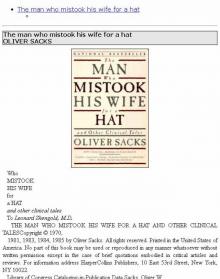 The man who mistook his wife for a hat
The man who mistook his wife for a hat 1989 - Seeing Voices
1989 - Seeing Voices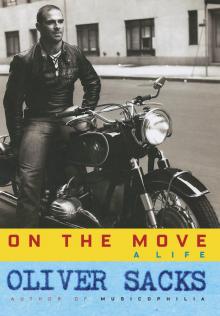 On the Move: A Life
On the Move: A Life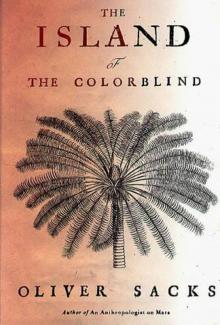 1996 - The Island of the Colorblind
1996 - The Island of the Colorblind An Anthropologist on Mars: Seven Paradoxical Tales
An Anthropologist on Mars: Seven Paradoxical Tales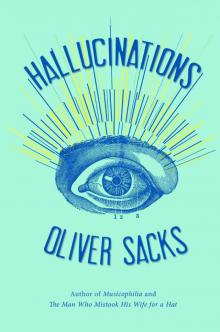 Hallucinations
Hallucinations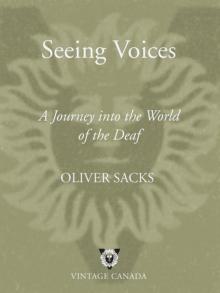 Seeing Voices
Seeing Voices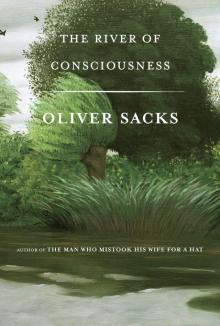 The River of Consciousness
The River of Consciousness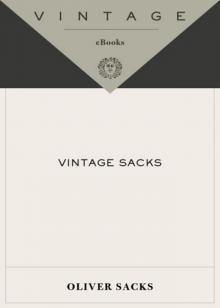 Vintage Sacks
Vintage Sacks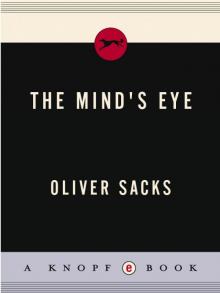 The Mind's Eye
The Mind's Eye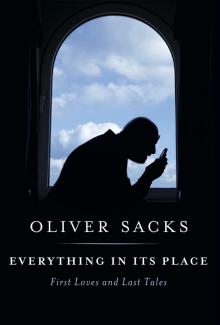 Everything in Its Place
Everything in Its Place An Anthropologist on Mars (1995)
An Anthropologist on Mars (1995)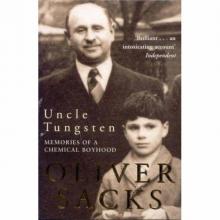 Uncle Tungsten: Memories of a Chemical Boyhood (2001)
Uncle Tungsten: Memories of a Chemical Boyhood (2001)